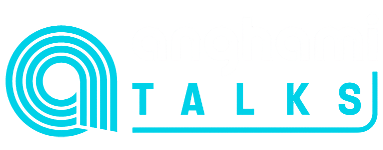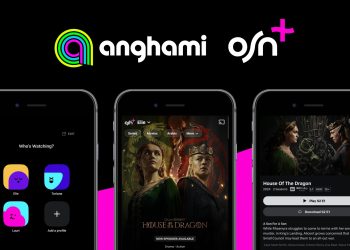Anghami is the leading music platform in the MENA region, with over 60 Million users. Behind this product are over a hundred employees that are full of energy and innovation. We work in a startup environment. We’re practical, we hate corporate work , and we like getting things done, fast. Because of that, we used to neglect building internal systems, because they would require time to setup. We thought we couldn’t afford spending time and resources on such luxuries. We should instead focus more on what the users need then go back to our needs.



Turns out we were very wrong, we should be spending more time on internal tools. There is a certain point where you realize your team is not small anymore, neither is your product. At that point, you need to allocate resources to help your team do their job better. Because if the team finds it too complicated to build the product, then your users will probably find it complicated to use that product.
At Anghami, we continuously review and evaluate the needs of each team. We try to find ways to automate parts of the work and minimize the time needed for each team to get their job done. We built many platforms, tools, and bots that are used on a daily basis by various parts of our team.
Okay, technical tools, CRUD interfaces, and all those backend interfaces are boring to read (and write) about. But you know what’s fun? Bots.
We use Facebook Workplace as an internal communication tool, and we’ve been adding custom integrations to it to have bots interact with employees in various ways.



Here are five simple ways we utilized bots to improve our work habits:
1- Redmine bot
Tools like Workplace, Hipchat, and Slack, are great for communication, but alone, they’re not enough for us to be able to take action, assign tasks, and track issues. That’s why we use Redmine as a project management tool.
But we still needed a way to make the link between a discussion on workplace and the related tasks. There was too much copy/pasting involved to make sure the tasks have links to the workplace posts and the posts have links to the redmine posts. Sounds like something a robot should be doing doesn’t it?
We integrated our own redmine bot that lets you type in the redmine task, add all the related information, and assign it to someone, all from a workplace post or comment instead of creating a task from Redmine itself. Redmine bot also replies on the same post whenever a task is resolved.
This bot cut the time needed to translate discussions to tasks by half, allowing our product team to focus on more important stuff while the bot takes care of linking everything together. It allows us to post an issue, assign the task, track progress, and get notified when it’s resolved, all in one post.



2- Missing content bot
Since we’re a music platform, we get requests on a daily basis for songs that users are unable to find on the platform. This could be because we don’t have the license to acquire it yet, or because of restrictions on the countries where the songs can be played. Previously, our customer support team would need to reach out to the content team for every inquiry, and when a song was acquired several weeks later, they would lose track of which user were asking for it.
With our missing content bot, we now post the song information in a specific workplace group, and the bot tries to find the song, tells us why the user might not be able to see it, and keeps track of the request. If the song is really not found, it would add it to a list and notify our content acquisition team. If the song is found, once it is added, the bot replies to all posts that requested it, even if they’re years old. This bot made this process much simpler and much faster. It also gave us proper insight into what is being requested where.
3- Reports bots
Emails are the first thing internal communication tools replace. So if you have jobs that run overnight to generate different reports, you can’t just have them send the reports to your email. It’s like giving the pizza delivery guy your old address. This is why our various bots takeover our internal communication tool every night and start posting reports in dedicated groups. This is quite normal until you have one bot posting a report about something that another bot can help with, and you end up with a bot replying to another.



We have a job that scrapes the web to find trending and uprising songs that are not on Anghami yet. The reporting bot posts those songs every day, and the missing content bot replies to it and keeps track of those songs. We just sit around and watch the conversation happen.
4- Monitoring and alerts chatbots
Problems happen, and while you can’t always prevent a problem before it happens, you should always be able to detect and notice it the moment it happens. A daily or hourly report is not enough to detect issues. That’s why we set up group chats to which bots send alerts whenever there is something a specific team needs to be aware of.



Whenever an important song is received, a push notification is submitted for approval, or when we have a high error rate, a chat message is sent to a group chat instantly and all the related personnel are alerted.
This simple functionality saved us several times from mistakes that we wouldn’t have been able to catch on time otherwise.
5- Productivity bots (My friends)
Here’s a simple equation: our goal is to have happy users, so we need to have an excellent product. An excellent product is built by an excellent team. To be able to do an excellent job, you need to be happy doing it. So, happy employees → happy users. Miserable employees → miserable users. It’s as simple as that.
Ensuring that we have a healthy environment where good work is appreciated helps the productivity of all team members. That’s why we built the Thank you bot.
Anyone at anghami can use #thankyou to thank their colleague for the help or support they provided. The bot would reply and thank that person again, it would also count how many times you’ve thanked others or received thanks. The idea behind it is to encourage everyone to thank each other and ensure everyone knows that their work is appreciated.
Another bot we’ve recently added is the workaholics monitor. It detects those who are working outside working hours and sends them funny messages to convince them to stop working. The idea here is to have them engage with the funny bot and ease their stress. It would also remind them that taking breaks is essential for their productivity. Reactions to this bot range from those who wait for it to start messaging them till those who got in an argument with it because it wouldn’t shut up.



Bottom line is, bots are cool. They’re easy to implement, simple to use, and end up increasing the efficiency, productivity, and satisfaction of your entire team. Happy team leads to happy users 🙂
Special shout out to Johny Toumieh, who worked on most of the Anghami bots, and to the 100+ humans and 10+ bots that are behind this awesome platform!
Find this interesting? You can become part of the team, check out our careers page. You can also read more stories from our team by following @AnghamiTech on twitter.







